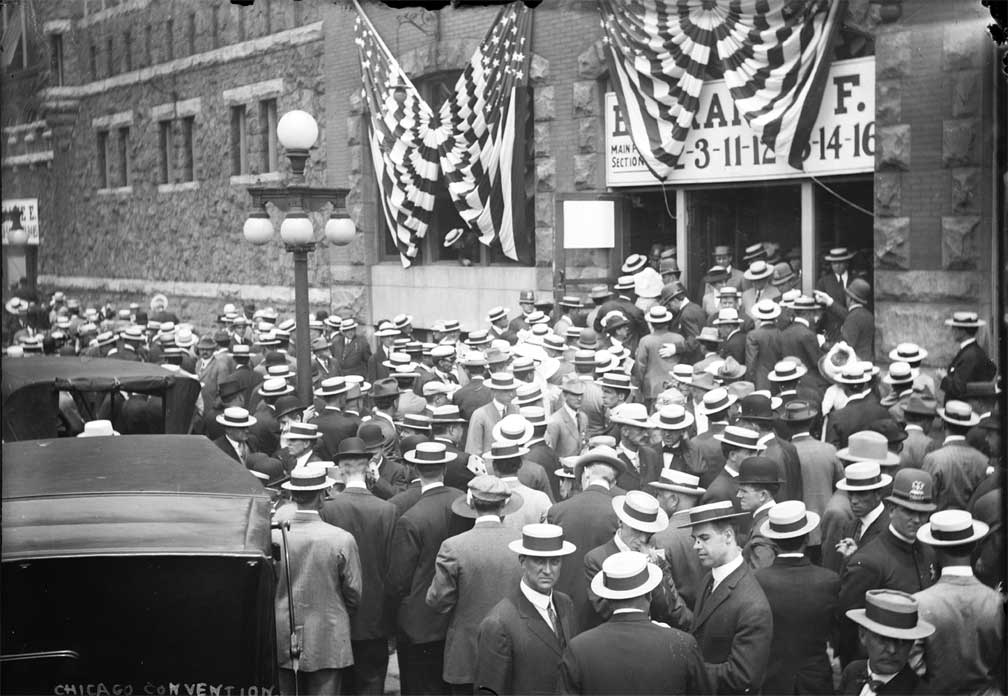presidential election process
The presidential election campaign kicks off after both main parties nominate their candidates. The two candidates participate in a series of debates during the campaign. Campaigns concentrate their efforts in the states considered “swing states”, (voters can be convinced to “swing” and vote for either party’s candidate), since in the American system, in all but two states whoever wins the most votes in that state receives all of the electoral votes for that state.
Choosing Candidates
The election campaign season begins after the midterm congressional elections. Those people wishing to receive their party’s presidential nomination begin by announcing their intentions to run. The need to raise money for a successful campaign has forced candidates to announce their intentions earlier and earlier. Candidates tend to spend a great deal of time in the early primary and caucus states Iowa and New Hampshire. The first voters who vote to choose each party’s ultimate presidential candidate are the voters in the Iowa caucuses that take place at the beginning of February, in the same year before the election. Over the spring primaries or caucuses are held in all of the states. Caucuses are events where people gather in person and vote openly for candidates, primaries are traditional secret ballot events where voters get to vote in the course of the day. Some states have open primaries; that means primaries where you can declare on the day of the vote what party with which you are affiliated. Others primaries require you to register with a party beforehand. Currently, the Republicans allocate delegates to their party convention proportionally based on the votes that they receive. While in the democratic primaries the delegate allocation varies from state to state, with some states being ‘winner takes all’.

The parties hold their convention any time between the end of June to early August. For the past 50 years each of the parties has known who their candidate would be before the convention began. As a result, much of the suspense that once surrounded these party convention is gone.
Election Campaign
Historically, the general election campaign begins on Labor Day weekend. However, in this day of electronic media, presidential campaigns begins as soon as it is clear who the candidate of each of the major parties will be.
Over the course of the presidential race, candidates crisscross the United States, holding rallies and other public events. Presidential candidates concentrate their efforts campaigning in what are known as “swing states” (i.e. states whose voters are open to selecting either a Republican or Democratic candidate.)

Since voters do not actually cast ballots for the President, but rather to determine which candidate will receive that state’s Electoral votes (see the entry on Electoral College), and since most states allot all of their electoral votes to the one candidate who wins the majority of votes in that state, candidates often avoid campaigning in states like California, New York and Texas where the majority of voters are registered to one particular party (i.e. Democrat or Republican) and the election outcome is usually clear long before election day.
Instead, candidates generally spend their time and money in places like Florida, Colorado, Ohio and other states whose voters have a greater likelihood of being persuaded to vote for one candidate, or another.
The highest profile national events of the Presidential campaign process are the televised election debates between the candidates seeking the presidency. The number of debates and their venues are negotiated directly by the various campaigns.
Each state is assigned their electoral votes based on the number of senators and representatives that state has in Congress. Each state has two Senators. The number of congressional representatives is determined by the state’s population, but is never less than one. As a result, small states with small populations are overly represented in the Electoral College. In the overwhelming majority of U.S. states the candidate who wins the largest percentage of the popular vote in a state wins all of the electoral votes for that state. This is the case in every state except for Maine and Nebraska, whose two electors are chosen by statewide popular vote, and then a single elector is chosen in each Congressional district.
When does the electoral college meet?
The Electoral College meets on the first Monday after the second Wednesday in December. Their votes are then counted again in the presence of the Joint Meeting of Congress on the sixth day of January to certify the returns. The candidate that wins over 50% of the electoral votes becomes
President of the United States.
Who are the members of the Electoral College?
The members of the electoral college are individuals who are active in each party (Democrat and Republican.) They are pledged to vote for one or the other candidate. While by law, electors are not obligated to vote for their pledged candidate, however, in fact, they always do.
What if no one wins a majority of electoral votes?
In the case that no candidate wins a majority of electoral votes, the election is decided by the House of Representatives. The House of Representatives votes by state. Thus, every state in the House of Representative gets one vote..
 >
>